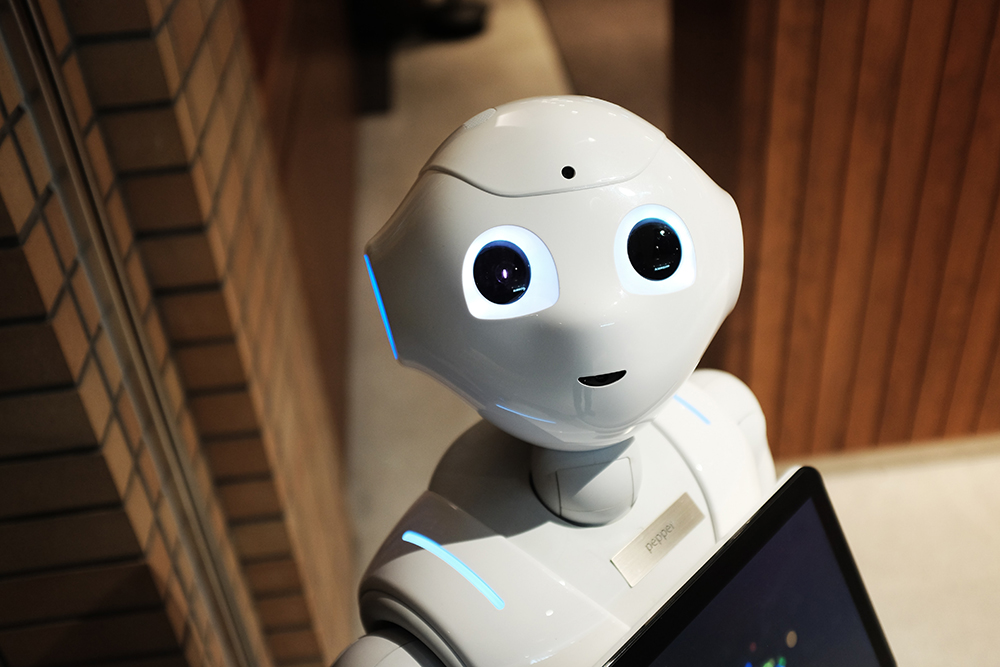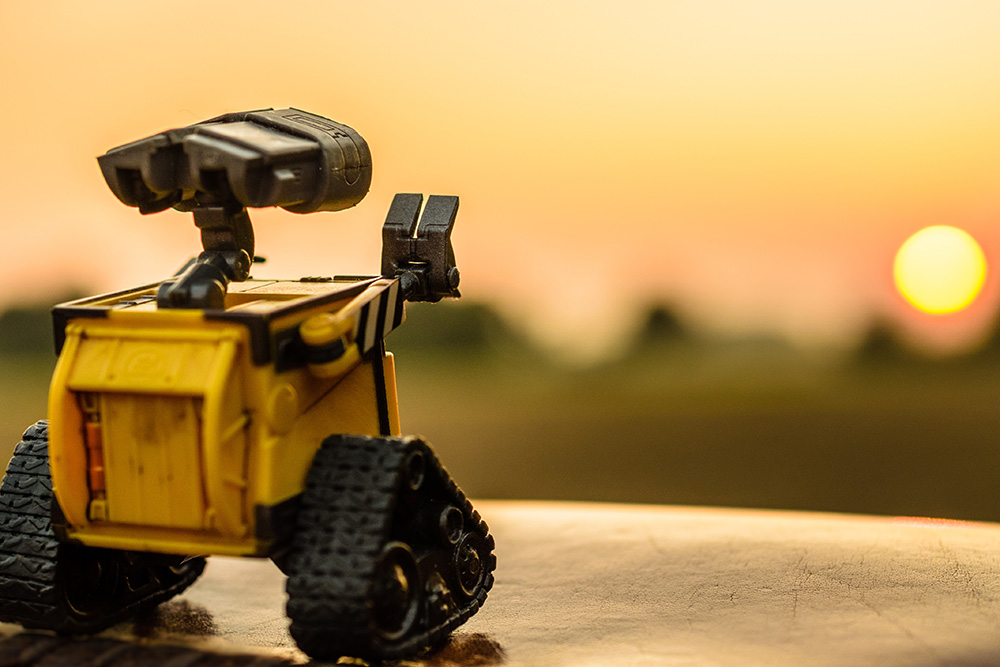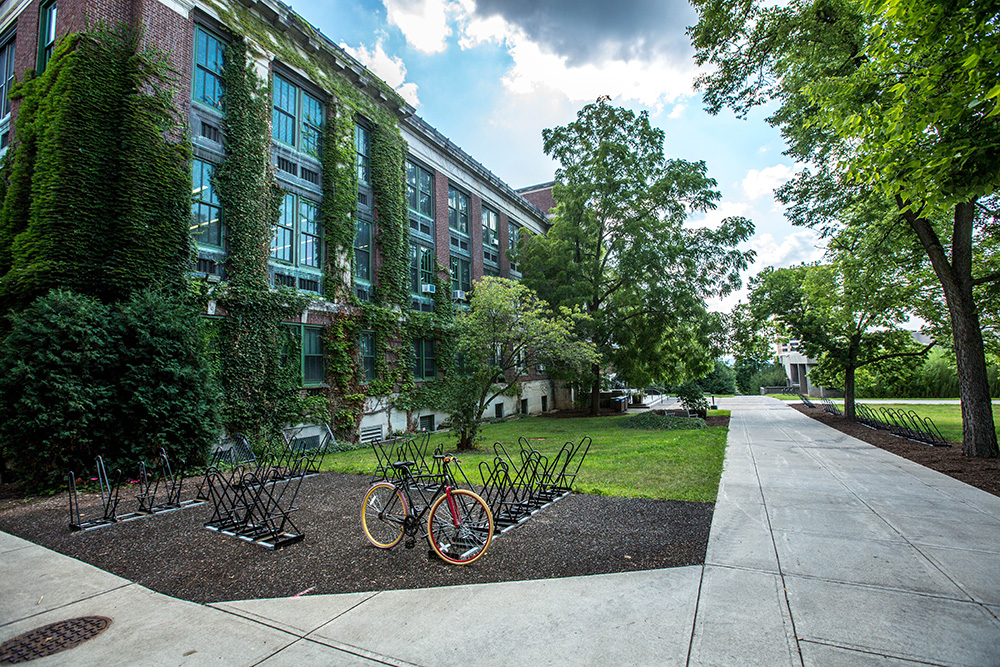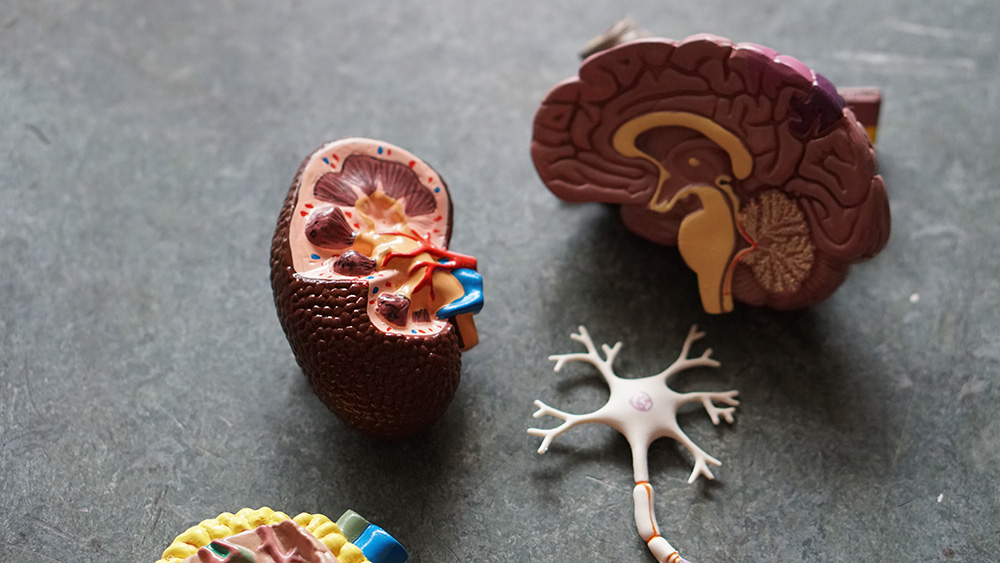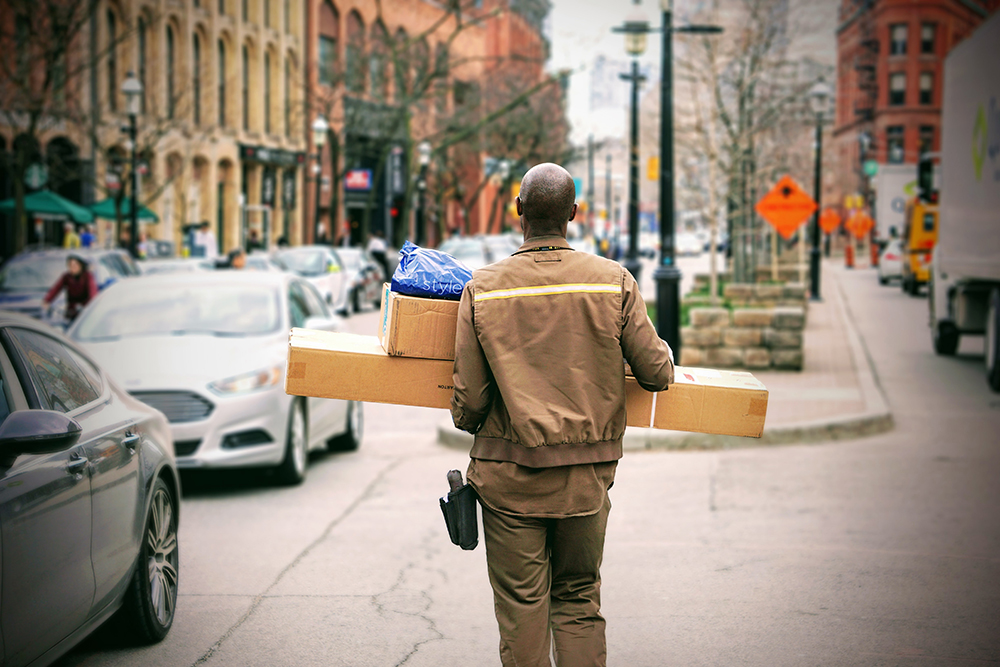The papers of the AAAI 2019 Spring Symposium “Interpretable AI for Well-Being: Understanding Cognitive Bias and Social Embeddedness symposium” were published in October 2019. The participants had met at Stanford University at the end of March 2019 to present and discuss their findings. Session 5 (“Social Embeddedness”) includes the following publications: “Are Robot Tax, Basic Income or Basic Property Solutions to the Social Problems of Automation?” (Oliver Bendel), “Context-based Network Analysis of Structured Knowledge for Data Utilization” (Teruaki Hayashi, Yukio Ohsawa), “Extended Mind, Embedded AI, and ‘the Barrier of Meaning'” (Sadeq Rahimi), “Concept of Future Prototyping Methodology to Enhance Value Creation within Future Contexts” (Miwa Nishinaka, Yusuke Kishita, Hisashi Masuda, Kunio Shirahada), and “Maintaining Knowledge Distribution System’s Sustainability Using Common Value Auctions” (Anas Al-Tirawi, Robert G. Reynolds). The papers can be downloaded via ceur-ws.org/Vol-2448/.
Robot Priests can Perform your Funeral
“Robot priests can bless you, advise you, and even perform your funeral” – this is the title of an article published in Vox on 9 September 2019. “A new priest named Mindar is holding forth at Kodaiji, a 400-year-old Buddhist temple in Kyoto, Japan. Like other clergy members, this priest can deliver sermons and move around to interface with worshippers. But Mindar comes with some … unusual traits. A body made of aluminum and silicone, for starters.” (Vox, 9 September 2019) The robot looks like Kannon, the Buddhist deity of mercy. According to Vox, it is an attempt to reignite people’s passion for their faith in a country where religious affiliation is on the decline. “For now, Mindar is not AI-powered. It just recites the same preprogrammed sermon about the Heart Sutra over and over. But the robot’s creators say they plan to give it machine-learning capabilities that’ll enable it to tailor feedback to worshippers’ specific spiritual and ethical problems.” (Vox, 9 September 2019) There is hope that the robot will not bring people back to faith, but rather enthuse them for the knowledge of science – the science that created Mindar.
Pepper’s New Job
SoftBank Robotics has announced that it will operate a cafe in Tokyo. The humanoid robot Pepper is to play a major role in this. But people will not disappear. They will of course be guests, but also, as in the traditional establishments of this kind, waitresses and waiters. At least that’s what ZDNET reports. “The cafe, called Pepper Parlor, will utilise both human and robot staff to serve customers, and marks the company’s first time operating a restaurant or cafe.” (ZDNET, 13 September 2019) According to SoftBank Robotics, the aim is “to create a space where people can easily experience the coexistence of people and robots and enjoy the evolution of robots and the future of living with robots”. “We want to make robots not only for convenience and efficiency, but also to expand the possibilities of people and bring happiness.” (ZDNET, 13 September 2019) This opens up new career opportunities for the little robot, which recognizes and shows emotions, and which listens and talks and is programmed to give high-fives. It has long since left its family’s lap, it can be found in shopping malls and nursing homes. Now it will be serving waffles in a cafe in Tokyo.
Punch the Robot
Robots are repeatedly damaged or destroyed. The hitchBOT is a well-known example. But also the security robot K5 has become a victim of attacks several times. The latest case is described in the magazine Wired: “Every day for 10 months, Knightscope K5 patrolled the parking garage across the street from the city hall in Hayward, California. An autonomous security robot, it rolled around by itself, taking video and reading license plates. Locals had complained the garage was dangerous, but K5 seemed to be doing a good job restoring safety. Until the night of August 3, when a stranger came up to K5, knocked it down, and kicked it repeatedly, inflicting serious damage.” (Wired, 29 August 2019) The author investigates the question of whether one may attack robots. Of course you shouldn’t damage other people’s property. But what if the robot is a spy, a data collector, a profile creator? Digital self-defence (which exploits digital as well as analog possibilities) seems to be a proven tool not only in Hong Kong, but also in the US and Europe. The rights of robots that some demand cannot be a serious problem. Robots do not have rights. They feel nothing, they do not suffer, they have no consciousness. “So punch the robot, I tell you! Test the strength of your sociopolitical convictions on this lunk of inorganic matter!” (Wired, 29 August 2019)
Talk to the Shuttle
Olli 2.0 is born. Local Motors and IBM had presented an autonomous shuttle in 2016 that reminded of the Smart Shuttle operated by PostAuto AG in Sion, Valais. Unlike this one, however, Olli 1.0 could not only think but also speak, both at a high level and with the help of IBM Watson. Passengers’ wishes are accepted, for example with regard to destinations, and these are even suggested; when it is hot, the car drives to the nearest ice cream parlour. Olli could also reassure passengers or passers-by: “For citizens of Maryland, many of whom have never seen a self-driving car, Watson’s reassuring communications could be critical to making them more comfortable with the idea that there’s no human being at the wheel.” (Information IBM) Olli 2.0, launched in 2019, can not only access IBM Watson, but also Amazon’s deep learning chatbot service Lex. Something else is different from the predecessor: Olli is now 80% 3D-printed. This was reported by Techcrunch on August 31, 2019. The magazine contains more interesting information about the shuttle. By the way, it is intended for small areas, especially for trade fairs and university campuses. But like the Smart Shuttle, it has already been tested in small cities.
Simple Brain Waves in Organoids
Clusters of brain cells, so-called brain organoids, have been bred in the biologist’s lab at the University of California, San Diego. According to the New York Times, the scientists altered human skin cells into stem cells, then “coaxed them to develop as brain cells do in an embryo”. “The organoids grew into balls about the size of a pinhead, each containing hundreds of thousands of cells in a variety of types, each type producing the same chemicals and electrical signals as those cells do in our own brains.” (NYT, 29 August 2019) The progression was stimulated by various means. A few days ago, the scientists reported that they have recorded simple brain waves in these organoids. “In mature human brains, such waves are produced by widespread networks of neurons firing in synchrony. Particular wave patterns are linked to particular forms of brain activity, like retrieving memories and dreaming.” (NYT, 29 August 2019) Someday it may be possible to use brain organoids to develop inverted or reversed cyborgs. Another method could be to take an adult brain from a deceased creature. There is no doubt that many interesting philosophical questions arise in this context, such as the boundaries between humans and machines and the rights of such cyborgs.
Holograms in Teaching
Some universities strive to use holograms in their teaching. Through this technology, the lecturer’s representative would have a physical presence in space. Even interactions and conversations would be possible if the holograms or projections were connected to speech systems. Dr. David Lefevre, director of Imperial’s Edtech Lab, told the BBC one year ago: “The alternative is to use video-conferencing software but we believe these holograms have a much greater sense of presence”. American Samoa Community College (ASCC) has now switched on a digital platform that will stream 3D holograms of University of Hawaiʻi faculty members to deliver classes and engage with ASCC students in real-time. According to the website, students at the HoloCampus launch on August 20 received a lecture by UH Mānoa Water Resources Research Center researcher Chris Shuler on the subject of “sustainability and resilience” – a theme “with special significance for the people of American Samoa and Pacific Islands nations as they face challenges such as increasing plastic waste and more dramatic weather systems brought about by climate change” (Website University of Hawaiʻi). Holograms could play a role in all sorts of areas, including social and sexual relationships.
The Resurrection of Dead Authors
lyrikline.org is an interesting and touching project. The writers themselves read their works. You can listen to Ingeborg Bachmann as well as Paul Celan. Spoken literature has been booming in Europe and the USA for about 15 years. The Chinese discovered audio books some time ago. Basically it is time-consuming and expensive to produce such books professionally. Moreover, the authors are not always available. The Chinese search engine Sogou wants to solve this problem with the help of visualization technology and artificial intelligence. It creates avatars of the authors who speak with the voice of the authors. “At the China Online Literature+ conference, the company announced that the first two authors to receive this avatar treatment will be Yue Guan and Bu Xin Tian Shang Diao Xian Bing … If these first AI author avatars are well-received, others could follow – and that could just be the jumping-off point. A company could produce book readings by deceased authors, for example, as long as enough audio and video footage exists. Eventually, they could even incorporate hologram technology to really give bibliophiles the feeling of being at their favorite author’s reading.” (futurism.com, 15 August 2019) So you could have Ingeborg Bachmann or Charles Bukowski read all of their own texts and watch them, many years after their death. Whether the results really sound like the originals, whether they influence us just as emotionally, can be doubted. But there is no doubt that this is an exciting project.
Amazon’s Delivery Robots Arrive in Irvine
Transport and delivery robots convey items of all kinds, like parcels and purchases from one party (often the provider or broker) to another (often the customer) or they accompany and relieve pedestrians and cyclists of their burden. From 2016 to 2018, Swiss Post tested small transport robots by Starship Technologies in Berne. Amazon began testing autonomous robots in a suburb of Seattle at the beginning of the year. According to USA TODAY, they will deliver packages to customers in Irvine, California. Irvine is a university town with about 250,000 inhabitants. It was planned and built in the 1960s by the Irvine Company. “Amazon said the robots, which are light blue and have the Amazon smile logo stamped on its sides, are able to avoid crashing into trash cans or pedestrians. Still, a worker will accompany the robots at first.” (USA TODAY, 6 August 2019) This is, of course, an effort that cannot be operated indefinitely. Once the escort is removed, there may be a higher likelihood of accidents. Transport robots of this type are dangerous trip hazards. They also create enormous complexity in urban traffic. These problems were addressed in Oliver Bendel’s article “Service Robots in Public Spaces” in June 2017 which can be downloaded here.
The Bartender Robot
The activities in a pub or a club are demanding. You have to take orders from guests, you have to understand them and be friendly to them, and you have to prepare drinks like Porn Star Martini or White Lady behind the counter. Then you must bring the bill, take money and give change. Robots are more or less good at these things. F&P Robotics has developed Barney, a complete and simple robotic bar solution. The Swiss company is known for its ambitious robots for therapy and care. Now it obviously wants to conquer the gastronomy. Barney offers an easy-to-use interface and a simple payment system. According to the manufacturer, the system impresses with elegant movements during the preparation of the drink. As a typical cobot, it can also work hand in hand with human bartenders. At Hotel Interlaken, Switzerland, you can see Barney in action from 13 August to 15 September 2019. You can form your own opinion and either come to the conclusion that this is the future – or that you still want a human service and a human smile. More information via www.barney-bar.com.


